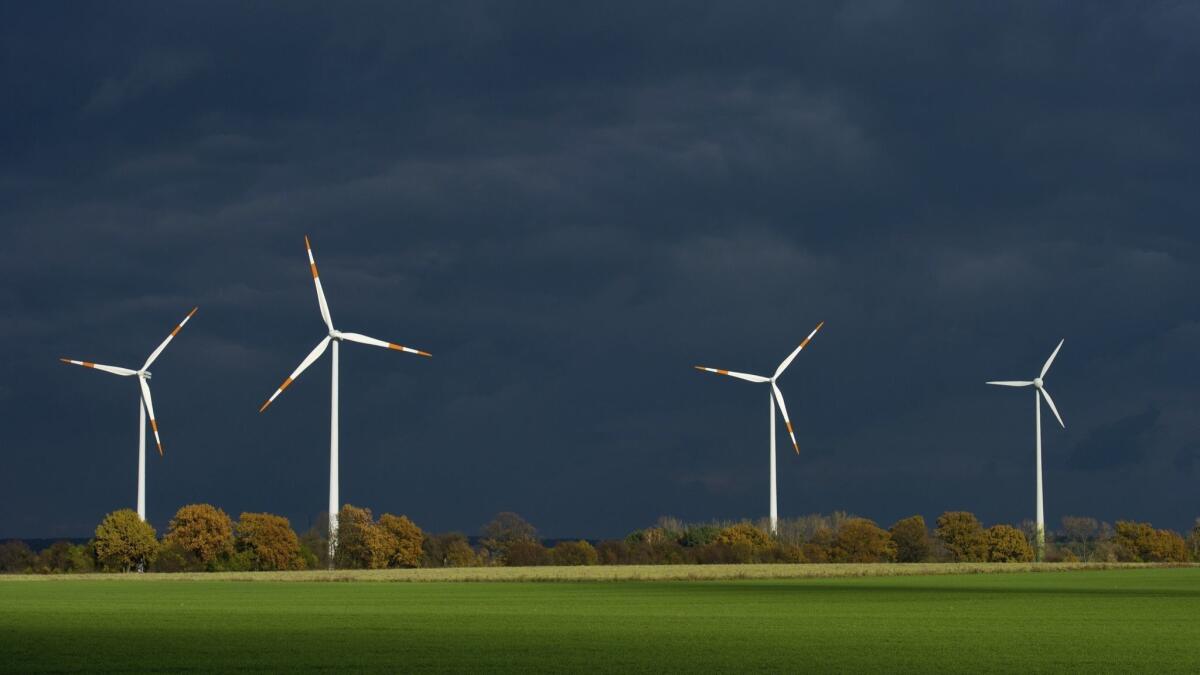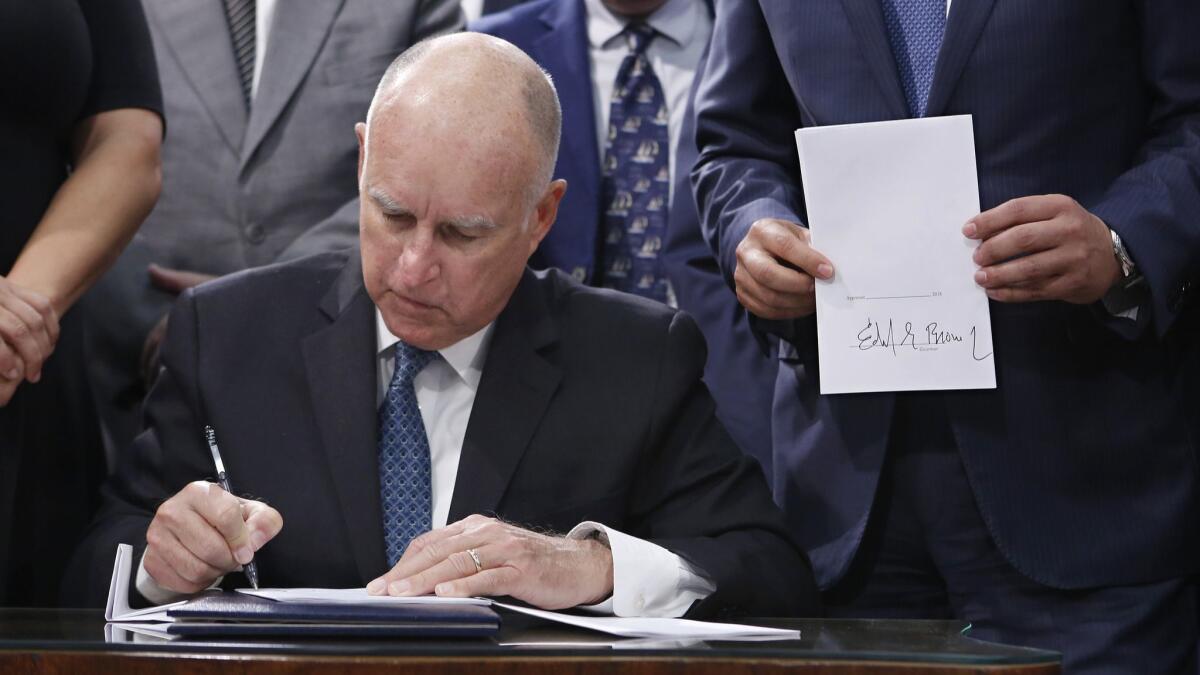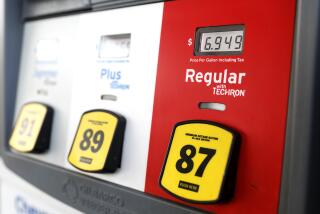Is California going the way of Germany when it comes to energy?

One place possesses the fourth-largest economy in the world. Another is home to the fifth-largest.
Both places have instituted ambitious energy and climate goals.
But one — Germany — is struggling to meet those targets and its citizens pay some of the highest electricity prices in the industrialized world. Is the German experience a cautionary tale for the other place — California?
It’s a question increasingly on the minds of some energy experts in the Golden State.
“There are a lot of parallels,” said James Bushnell, an economics professor at UC Davis. “Both have been leaders and both have experienced a period of energy cost increases that are starting to create some worries of a pending backlash.”
Yes, California is not a country unto itself, but its gross state product in 2017 was $2.747 trillion. If the Golden State were a nation, it would have surpassed the United Kingdom in economic terms last year for the world’s No. 5 spot.
Germany, at $3.685 trillion, is No. 4.
Germany takes the leap
Keen to drastically reduce greenhouse gas emissions and transform its energy sector, German leaders adopted a vast program called Energiewende eight years ago, and the country prides itself on setting the pace for change in the European Union.
In the United States, California sees itself in the same light — leading the nation in a raft of metrics, such as the number of rooftop solar installations, and mandates, like the establishment of the country’s most aggressive Renewable Portfolio Standard.
But Germany has suffered setbacks on its path to become cleaner and greener.
It set a long-term goal to generate 80% of its electricity from renewable sources by 2050. In the interim, Germany planned to slash CO2 emissions by 40% by 2020, compared with 1990 levels.
But earlier this year, officials admitted the country will not hit the 2020 goal, saying it would reach 32% at best.
Greenhouse gas emissions in Germany have not decreased for the last nine years and emissions from the transportation sector have not fallen since 1990.
“We in Germany have to admit that we have to get it right again,” Chancellor Angela Merkel said at a climate meeting in June.
It hasn’t come from lack of effort or money.
About 25 billion euros (about $28 billion) in subsidies go to the renewable sector in Germany. The country is expected to spend more than 500 billion euros ($580 billion) by 2025 to overhaul its energy system, according to Bloomberg News.
As a result, renewable energy sources now account for 36% of the power in Germany.
In contrast to California, where the solar industry has boomed, wind power has taken off in Germany.
Accommodating a long-term conversion to renewable energy has required a rapid expansion of Germany’s power grid.

Wind farms in Germany produce plenty of power but they are largely located in the northern part of the country while factories are concentrated in the south. About 5,000 miles of transmission lines are being laid, paid for by German utility customers.
In addition, wind energy production is so robust that windy conditions can sometimes deliver more energy than the grid can handle, overloading power lines.
In August, Germany’s economics minister said grid expansion plans were “catastrophically behind schedule.”
But perhaps the biggest stumbling block relates to nuclear power.
After the 2011 disaster at the Fukushima nuclear plant in Japan following a tsunami, Merkel’s coalition government decided to shut down all nuclear power in Germany by 2022.
At the time of the decision, there were 17 nuclear plants operating in Germany. Seven remain. Although nuclear power has plenty of critics, it produces electricity free of greenhouse gases.
In an ironic twist, phasing out nuclear power triggered the construction of new facilities using coal, one of the most polluting fossil fuels.
Renewable sources such as wind and solar have problems with “intermittency.” That is, solar production drops when the sun goes down and wind power wanes when breezes don’t blow.
To fill in the gaps, grid managers turn to “baseload” generation from other, more traditional, sources, including coal, which accounted for more than a third of Germany’s energy supply last year.
“Prices for natural gas have increased in the last [few] years, making it less competitive compared to coal,” said Michael Pahle of Germany’s Potsdam Institute for Climate Impact Research in an email.
Rising costs
The growing pains have led to higher prices, largely shouldered by residential power customers.
Between 2015 and 2017, Germany inched ahead of Denmark for the highest electricity prices for household customers (35 cents per kilowatt-hour, in U.S. currency), according to the statistical office of the European Union.
“In Germany, commercial industrial rates have not gone up much,” said Severin Borenstein, a professor of business administration and public policy at the Haas School of Business at UC Berkeley.
“It’s easy for companies to move across boundaries within the [European Union] so that if you raise commercial industrial rates very much, you would just get a bunch of leakage as companies moved to other parts of the EU,” he said. “So they’ve ratcheted up residential rates.”
Despite paying higher energy bills, Germans still seem to support the country’s renewable energy strategy. A survey conducted in 2017 showed 88% of voters backed Energiewende.
Will California’s experience resemble Germany’s?
Not so fast, Borenstein said.
“I think California has pursued a much smarter environmental policy,” he said. “But in many ways, when you look at what Germany is doing, they aren’t pursuing the technologies in the same way” as California.
Differences in California
For one thing, coal is essentially a non-factor in California.
And the state is “grappling much more directly with how you balance the grid with intermittent renewables” in the form of excess solar production, Borenstein said.
So much solar is produced at peak periods that wholesale energy prices can drop to zero or into negative territory. That puts strain on the grid, and the California Independent System Operator (the organization that oversees the operation of about 80% of the state’s electric power system) often has to send the excess solar to neighboring states like Arizona or curtail it altogether.
The solution is to find a way to save the energy and dispatch it later, such as when the sun sets. One possible answer is battery storage.
The California Public Utilities Commission has ordered power companies to find storage options — such as a lithium-ion facility in Escondido recently built by San Diego Gas & Electric. But the sector is still in its early stages, and although storage costs are going down, they are still more expensive than traditional energy sources such as natural gas.
According to the most recent numbers compiled by the California Energy Commission, natural gas accounts for the largest portion of in-state generation — 43.40%. Renewables are growing, up to 29.65%.
Nuclear power accounts for 8.69% of in-state generation — all from California’s last remaining nuclear plant, Diablo Canyon, which is scheduled to shut down in 2025.
Michael Shellenberger, president of the Berkeley-based pro-nuclear research group Environmental Progress, said California will struggle — just as Germany has — without nuclear power.
“If you shut down nuclear plants, your emissions are either not going to decline or they’re not going to decline nearly as quickly as they would if you kept nuclear plants open,” Shellenberger said.
Nuclear power may not emit greenhouse gases but the industry has a vast number of critics, especially in California. Opponents cite the potential danger of radiological exposure, the federal government’s failure to come up with a location to put the spent fuel stored at the 99 reactor sites across the country and numerous cost overruns to construct new nuclear power plants.
Integration
Borenstein said making up for the loss of nuclear power will depend largely on how effectively California can integrate renewables into the grid.
“We all know now that wind and solar power, on a per kilowatt-hour basis, can be produced pretty cheaply,” Borenstein said. “The problem is, if you can’t store it, it doesn’t end up [being used] at the right time.”
Other storage options include “pumped hydro” in which hydroelectric facilities, using turbines, pump water from one reservoir up to another and then release it. The ensuing rush of water generates electricity when the grid needs it.
“Some environmentalists aren’t wild about” pumped hydro, Borenstein said. “It may not be an ideal solution but my view is there is no ideal solution. We have to be grappling with reality, not a perfect outcome, and deal with the reality that we’re not going to get there at all if the only solutions we propose are very expensive ones.”
Californians pay an average of 15.23 cents per kilowatt-hour for electricity, according to the U.S. Energy Information Administration. Although that’s decidedly less expensive than the 35 cents per kilowatt-hour in Germany, California’s electricity price is about 50% higher than the average U.S. state’s.
“I am worried about where California’s rates are going,” said Bushnell of UC Davis, “but I don’t really see it following the German trajectory.”

The state’s Renewable Portfolio Standard requires utilities to obtain 50% of the state’s overall energy mix from renewable sources by 2030.
On top of that, Gov. Jerry Brown in September signed Senate Bill 100 into law that calls on the state to derive 100% of its power from clean-energy sources by 2045.
SB 100 calls for 60% of the state’s total power to come from renewable sources such as utility-scale solar and wind by 2030. The remaining 40% of the mix, to be achieved by 15 years after that, can come from other zero-carbon sources, such as large hydroelectric dams.
Bushnell worries that as the state gets closer to 100%, electricity costs will rise to a point where consumers will be driven away from electric power just as the state’s efforts to electrify the transportation and heating sectors are taking off.
“We’re trying to squeeze every ounce of carbon out of the electric sector, no matter what the cost,” Bushnell said. “Somewhere between 60% and 100%, I think we’re going to hit a big cost spike and then we’ll have to think about how we buy renewables.”
Bushnell, who detailed his concerns in a recent blog post, wondered whether reaching a politically popular 100% clean goal that could theoretically triple the costs is as worthy as reaching, say, 80% or 90% and keeping costs manageable while ensuring electrification efforts in other sectors.
“I think we’re crossing the threshold where the money spent on electricity is giving us decreased returns,” Bushnell said.
Dan Jacobson, state director of Environment California and a staunch advocate of SB 100, acknowledges the issues facing Germany but does not see a direct connection that applies to California.
“The stuff we’re talking about isn’t easy, and that shouldn’t deter us from doing the work,” Jacobson said. “What it should encourage is a think tank-like process where we can all learn from each other’s mistakes and move forward.”
Nikolewski writes for the San Diego Union-Tribune.







